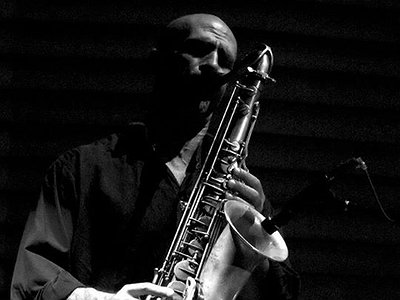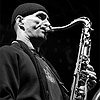Part 1
Name: Remi Álvarez
Nationality: Mexican
Occupation: Improviser, Saxophonist
Labels: Intolerancia, Lengua De Lava, Noise Kontrol, Opción Sónica
Musical Recommendations: Double-bass player Arturo Baez, and drummer Gustavo Nandayapa.
When did you start playing your instrument, and what or who were your early passions or influences?
I began to take flute and piano lessons when I was 14. But I already knew I was going to become a saxophonist, which I started to study a few years later. My first influences were the jazz and free jazz musicians I heard at that time, but the most important ones were Ornette Coleman, Pharoah Sanders, Don Cherrry, John Coltrane, Eric Dolphy, Charles Mingus, Sun Ra, Anthony Braxton, Sam Rivers, and Jeremy Steig.
For most artists, originality is first preceded by a phase of learning and, often, emulating others. What was this like for you? How would you describe your own development as an artist and the transition towards your own voice?
I started playing by improvising over jazz records. At the same time, I was taking flute and piano lessons, and studying harmony and music theory in general. I have not transcribed many solos, but I have listened to a lot of music and I have studied my instruments and played for hours. I knew that sooner or later I would find my own voice, with many influences, but ultimately my own way to express life.
Tell me about your instrument, please. How would you describe the relationship with it? What are its most important qualities and how do they influence the musical results – and possibly even your own performance?
My main instruments are the tenor and soprano saxophones. Through them I am able to express whatever I need to communicate; we are a unity, they are part of me, it’s my voice.
Many artists feel as though, at some point, certain people gave them the ”permission to do certain things”. How was that for you – in which way did the work of particular artists before you “allow” you to take decisions which were vital for your creative development?
I’ve never requested permission from anyone to play this or that. But I have to mention that I was fortunate enough to work in the 80s with one of the most extraordinary musicians I have met, pianist Francisco Téllez, whose playing was related both to Monk and Cecil Taylor. He always supported me to play the way I played. With his quartet, we had a regular engagement from Tuesday to Sunday for four years.
What were some of your main artistic challenges when starting out as an artist and in which way have they changed over the years?
Making a living from music has never been a problem for me in Mexico, since I’ve had the fortune to always have work playing and teaching saxophone lessons. However, the main challenge was to fund my own language and create projects with musicians who understood and liked my music. The challenge has not changed much; even though I’ve found musicians to play with, I am still looking for and enriching my own language.
What do improvisation and composition mean to you and what, to you, are their respective merits?
Composition and free music can be combined very well. The AACM musicians, for instance, accomplished this fusion with great success. Naturally, playing free music with no themes take you to completely unknown places, while composition takes you to more established places. Improvisers tend to prioritize creativity in real time, while some composers tend to write all the notes and leave no room for improvisation, which allows them to correct the written piece over and over until they are satisfied with it.
How do you see the relationship between sound, space and performance and what are some of your strategies and approaches of working with them?
The room where you will play is very important, especially for a solo saxophone concert. The acoustics of the venue can completely change the way you play. It is very different to play in a cathedral than an outdoors venue. But either way, you must try to be ready to adapt, since you can not always have the perfect setting.
Derek Bailey defined improvising as the search for material which is endlessly transformable. Regardless of whether or not you agree with his perspective, what kind of materials have turned to be particularly transformable and stimulating for you?
All your ideas are transformable; you can create them again and again and feel them as new. It’s also possible in the middle of a concert to “discover” new sounds or something that you had never played before. What stimulates me is sound; I enjoy being able to express myself through sound, and that it can be melodic or timbral.
Purportedly, John Stevens of the Spontaneous Music Ensemble had two basic rules to playing in his ensemble: (1) If you can't hear another musician, you're playing too loud, and (2) if the music you're producing doesn't regularly relate to what you're hearing others create, why be in the group. What's your perspective on this statement and how, more generally, does playing in a group compare to a solo situation?
I totally agree with John, we always need to listen to the musicians we are playing with. Playing only what you are feeling with no consideration for the others musicians in the band is a recipe for disaster. When I play with 4 or more musicians, my playing changes radically, I don’t have to play all the time, I play silences more, I can be more attentive of what the others are playing and then try to help keep the music alive with my playing.






